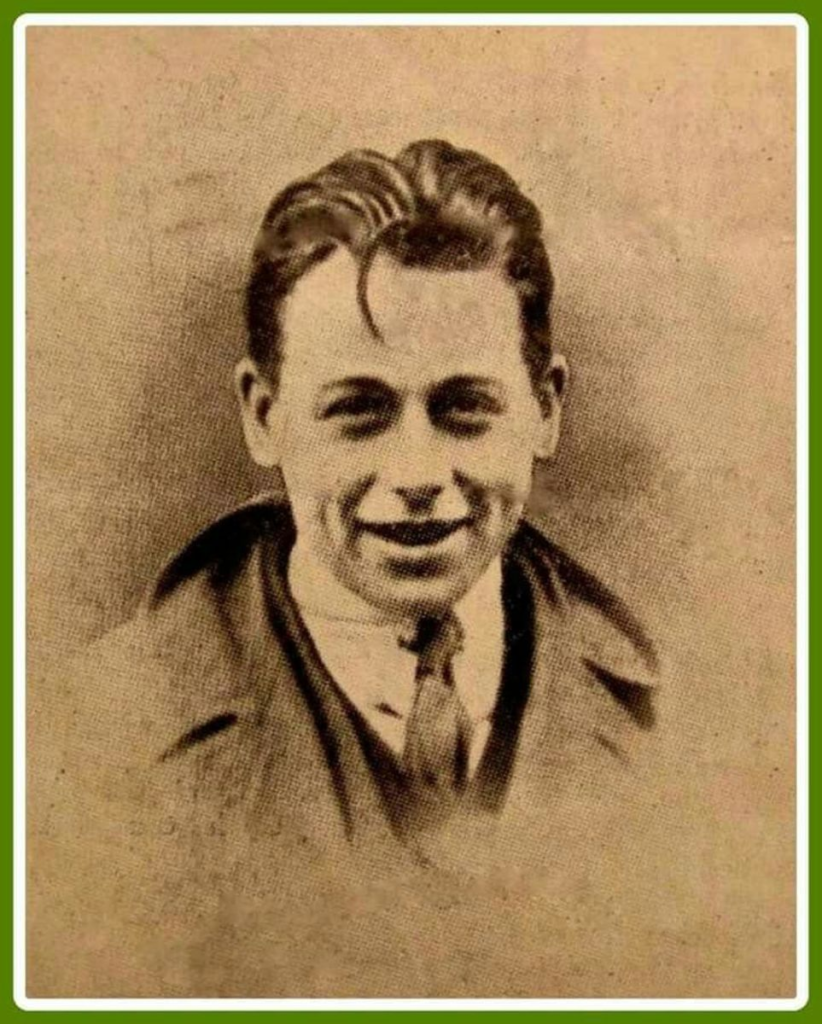
The Irish Revolutionary was executed in Mountjoy Gaol on November 1st 1920.
Barry was born on January 20th 1902, at 8 Fleet Street, Dublin but he also spent some time in county Carlow as his mother Mary who was originally from the county moved back there with the family when her husband Thomas died in 1909.
Upon their return to Dublin, Barry went to school at St Mary’s in Rathmines, from there he went to Belvedere College where he excelled at his studies and was renowned for his hurling and rugby skills. While still at Belvedere, Barry joined the Volunteers in 1917 aged just 15.
Barry was first assigned to a volunteer battalion in the Northside of Dublin, he later transferred to the newly formed ‘H’ Company, under the command of Capt. Seamus Kavanagh.
Despite his political and sporting activities, Barry won a merit-based scholarship given annually by Dublin Corporation, which allowed him to become a student of medicine at UCD in 1919.
When the Tan war broke out in 1919, his first job in the IRA was delivering mobilisation orders around the city. Barry trained in a number of locations in Dublin, including 44 Parnell square which is now the Sinn Fein HQ. By 1920 Barry was involved in raiding depots and garrisons for weapons and ammunition to be used by the IRA.
On the morning of September 20th 1920, Barry went to Mass, then joined a party of IRA volunteers on Bolton Street in Dublin city centre. Their orders were to ambush a British army truck as it picked up a delivery of bread from the bakery, and capture their weapons.
The ambush was scheduled for 11:00 am, which gave him enough time to take part in the operation and return to class in time for an examination he had at 2:00 pm. The truck arrived late and was under the command of Sergeant Banks.
More In The Comments Section.3 w
irishrevolutionariesBarry and his comrades were to surround the truck, disarm the soldiers, take the weapons, and escape. He covered the back of the truck, and when challenged, the five soldiers complied with the order to lay down their weapons.
A shot was then fired, possibly a warning shot from a British soldier in the front. Barry and the rest of the ambush party then opened fire. His gun jammed twice, and he dived for cover under the truck. His comrades fled, and he was left behind. He was then spotted and arrested by the soldiers.
One of the soldiers, Private Harold Washington, aged 15, had been shot dead. Two others, Privates Marshall Whitehead and Thomas Humphries were both badly wounded, and both later died of their wounds. These were the first British soldiers killed in Ireland since the 1916 rising.
Barry was brought to the North Dublin Union which was been used as British Army barracks since 1918, here Barry was tortured to give the names of his comrades but he refused. Barry was then transferred to Mountjoy Gaol.
Barry was court-martialed on October 20th and his solicitor informed the court that Barry was not recognising the British court as he was a soldier of the Irish Republic.
After his ‘trial’ Barry was returned to Gaol and was told at 8 pm that night that he was to be executed on the morning of November 1st.
On October 28th details of Barry’s torture were released by Sinn Fein, and the news that he was due to be executed by hanging caused outrage amongst much of the Irish public.3 likesReply
irishrevolutionariesLarge crowds assembled outside the Gaol and Michael Collins planned a rescue attempt but had to call it off due to large numbers of British soldiers sent to the Gaol.
There was now a massive campaign that got worldwide attention to save Kevin Barry, Barry hoped to have a soldier’s death by firing squad but the British brought a hangman over from England to do the dastardly deed.
The night before his execution it was noted by visitors that Barry seemed calm and was in good spirits despite what was going to happen the next day, his mother commented that he was happy to die for the Republic.
Kevin Barry was hanged on November 1st, after hearing two Masses in his cell. Canon Waters, who walked with him to the scaffold, wrote to Barry’s mother later:
“You are the mother, my dear Mrs Barry, of one of the bravest and best boys I have ever known. His death was one of the most holy, and your dear boy is waiting for you now, beyond the reach of sorrow or trial.”
Barry’s execution coming only a few days after the death on hunger strike of Terence MacSwiney caused much revulsion in Ireland and many young people joined the IRA.
Barry was buried in the grounds of Mountjoy Gaol and during the Tan war, another nine executed IRA vols would join him in the plot near the women’s Gaol, they became known as the forgotten ten.
On October 14th 2001, the remains of these ten men were given a state funeral and moved from Mountjoy Gaol to be re-interred at Glasnevin Cemetery in Dublin.
